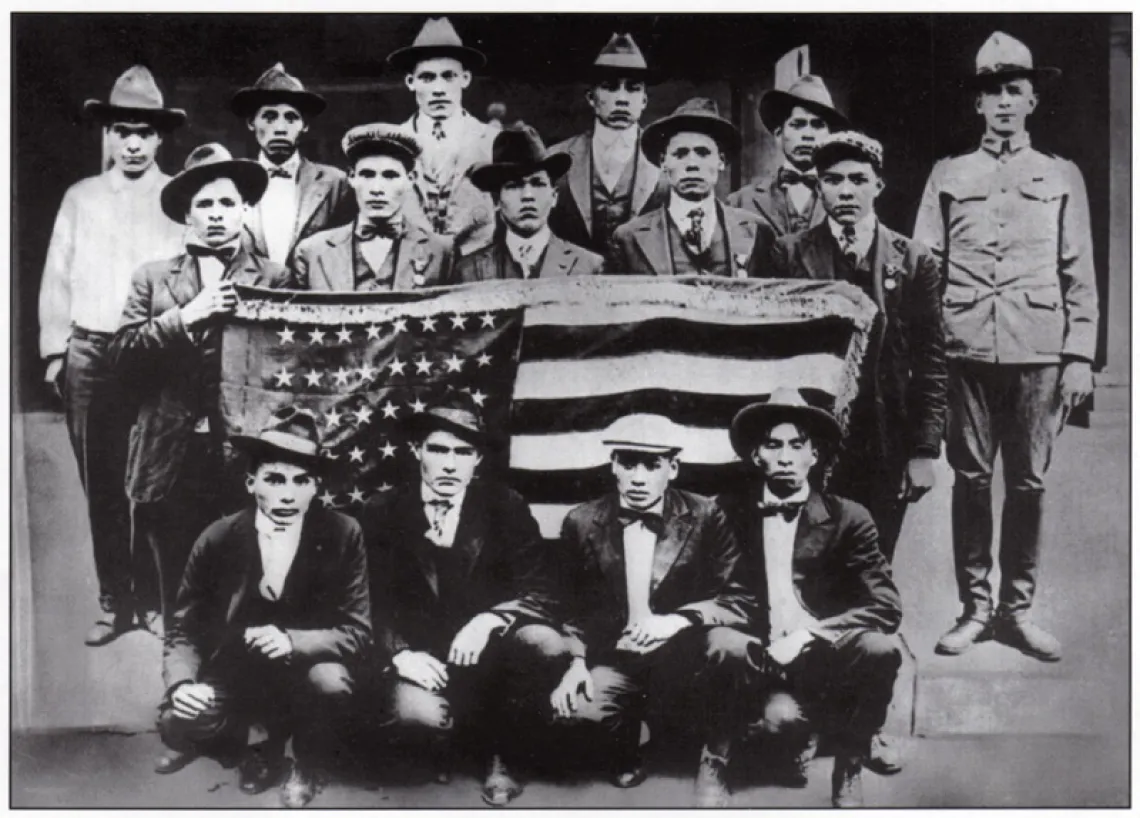Remembering Navajo Code Talkers: Q&A with Professor Emeritus Tom Holm

Choctaw soldiers in training in World War I for coded radio and telephone transmissions. Credit: Wikipedia/Oklahoma Historical Society
August 14th is National Navajo Code Talkers Day, which honors the nearly 400 fluent Navajo speakers who were recruited by the Marine Corps to devise a code that couldn't be readily understood by the Japanese during World War II. The code talkers used their native language in coded form to help the Allies win the war, by confusing the Axis enemies with sounds they were unfamiliar with.
Tom Holm, a professor emeritus in the Department of American Indian Studies, is a Marine Corps veteran of the Vietnam War and an enrolled citizen of the Cherokee Nation with Muskogee ancestry. His book, Code Talkers and Warriors: Landmark Events in Native American History, addresses topics such as draft resistance, the relocation of Native Americans to West Coast defense plants, post-war life, and most significantly, their unique involvement in the war effort. Holm recently gave specific insights into the Code Talkers — the challenges they faced, their significant contribution, and legacy.
What inspired you to write a book about the Navajo Code Talkers? What was the most surprising discovery you made?
Chelsea House Publishers asked me to write a book [for young adults — specifically high-school age] about Native American service in World War II. Since the Navajo Code Talkers were an important part of winning the war in the Pacific, they were necessary to the full story of the Native participation in the war.
How do you believe the contributions of the Navajo Code Talkers have influenced both Navajo culture and broader American historical narratives?
The Dine or Navajo people take great pride in their warriors traditionally. There are, for example, Navajo ceremonies that, in the words of one of the Code Talkers I met years ago, "put the armor on and take the armor off." Veterans are the key to keeping these ceremonies alive. Not a great deal is known about them except in the works of Bill Meadows and Zonnie Gorman, the daughter of one of the first Code Talkers, Carl Gorman.
Can you elaborate on some of the significant challenges the Navajo Code Talkers faced during World War II and how they overcame them?
There were numerous challenges. One of the dangers they faced was the potential of being killed by their fellow Marines. On several occasions, White Marines mistook the Code Talkers for Japanese soldiers. The Marine Corps actually had to supply bodyguards for them. Additionally, they were subject to White stereotypes of Native Americans, for example, being called "Chief” — all the while having White Marines refer to areas under Japanese control as "Indian Territory." Not only that, but after they returned home to Arizona, they weren't even allowed to vote in elections. In short, despite their service, they weren't considered competent enough to be part of the electorate.
In your opinion, how well has the legacy of the Navajo Code Talkers been preserved and recognized in modern times?
The legacy of the Code Talkers has only recently been recognized. For a while, their contribution was a secret. When the secret was finally out, a few scholars took up the study of their contributions to the war effort. What is still seemingly ignored is the brilliance of these men. After all, they devised a real code that could be used to pass messages in real time that was never broken. Their recognition led to the discovery of numerous other code talkers like the Comanches, Hopis, Cherokees, and Lakotas.
##
Find out more about Navajo Code Talkers here.

